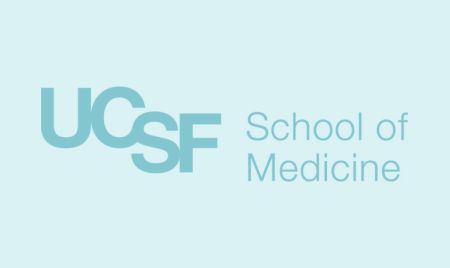First and Second-Year Med Students Help Solve Critical Health Care Problems

Medical students (from left) Daniel Kim, Anna Grandis and Maria Castro display their clinical microsystem clerkship project at a symposium on Nov. 18, 2019.
On November 18, medical students showcased quality improvement projects completed as part of their Clinical Microsystems Clerkship (CMC). This program involves 16 months of immersion in an inter-professional, team-based clinical environment, where they learn clinical skills and complete a longitudinal health systems improvement project to address urgent health care challenges.
“This training was built around the need for physicians to be just as well-versed in the systems of care as they are in direct patient care skills,” said UCSF School of Medicine Dean Talmadge E. King, Jr, MD. “I have no doubt that this program will be seen as a critical turning point for the betterment of American medical education.”
In 51 projects across three major UCSF affiliated clinical sites 152 students contributed more than 10,000 hours of effort over the past 16 months.
“This body of work proves that our students, in all phases of their education, can make contributions to our health care systems,” King said.
The program reflects the focus of UCSF’s medical school curriculum not only on individual excellence, but also on systems scholarship, adaptive leadership and inter-professional teamwork, said Vice Dean for Medical Education and Executive Vice Dean for the School of Medicine Catherine R. Lucey, MD.
“[Students] are solving some of the most complex health care problems, from the opioid crisis to delirium in hospitalized patients to challenges with mental health access,” Lucey said. “You all as first and second-year medical students are moving the ball down the field.”
Students expressed appreciation for their exposure to a clinical environment early in their medical education and their new understanding of a quality improvement (QI) approach. “The biggest impact this had on me was adopting a QI mindset,” said medical student Abdikarin Abdullahi. “Our role as a physician is not solely based on the patients we’re going to interact with, but also the systems that they’re involved with. Systematic changes will eventually lead to better patient outcomes.”
"The biggest impact this had on me was adopting a QI mindset...Systematic changes will eventually lead to better patient outcomes."
Abdikarin Abdullahi
UCSF Medical Student
Three CMC projects are highlighted below.
Improving Outcomes at the San Francisco Veterans Affairs Medical Center (SFVAMC) Intensive Care Unit (ICU)
Students: Abdikarin Abdullahi, Alexander Bell, Eleanor Kang, Sophie McAllister, Ian Maynor
Coaches: James Frank, MD
The ICU is an essential and life-saving unit that cares for patients with severe and life-threatening illnesses. However, an ICU stay can also be accompanied with complications such as infections or hospital-associated pneumonia. Contributing factors to these complications include high levels of pain, prolonged mechanical ventilation, sedation, delirium and lack of early mobility. Up to 80% of ICU patients will experience delirium at some point during their stay. These factors can also act synergistically together, contributing to and worsening each other. This can contribute to decreased quality of life, increased length of stay and mortality. To combat these ICU-associated complications the Society of Critical Care Medicine created the ICU bundle, a collection of evidence-based interventions meant to target factors in the ICU associated with poor outcomes. The Palo Alto VA implemented the ICU bundle and reported a significant decrease in outcomes like hospital death within seven days, delirium, physical restraint and discharge to a facility other than home.
The ICU Bundle
A: Assess and manage pain daily
B: Perform both spontaneous breathing and awakening trials for intubated and sedated patients respectively
C: Appropriate choice of sedative
D: Delirium assessment management and prevention
E: Early mobility plan to be set for each patient daily
F: Family and patient engagement
(source: Society of Critical Care Medicine)
Before the students began their work, adherence to five out of six bundle elements fell below the medical center's benchmark of 80%. After the students had implemented their interventions, four out of six bundle elements reached the goal of 80% adherence with the others very close to the target as well.
“I appreciated learning about the whole QI experience from beginning to end,” said medical student Eleanor Kang. “When I first learned about the project all of these ideas came to mind, but after we started digging into the details and talking to everyone in the ICU – from the nurses to the pharmacists to the physical and respiratory therapists – another story emerged.”
Referrals to Child Protective Services: Sparking Person-Centered Reform
Students: Ninad Bhat, Oliver Cervantes, Helena Record and Christina Schmidt
Coach: Jennifer Kerns, MD, MS, MPH
At Zuckerberg San Francisco General Hospital (ZSFG) providers in the Family Birth Center are tasked with making the high-stakes decisions of whether or not to make referrals to child protective services (CPS). While there are times when a CPS intervention is necessary, open CPS cases can be incredibly traumatic and can lead to lasting adverse social and psychological outcomes for both mom and baby. Desire within the Family Birth Center to improve the CPS referral process was heightened by recent data that showed widespread racial disparities in CPS within San Francisco: Black children in San Francisco County are removed from their families at a rate that is 3.6 times higher than that of their white counterparts. This project aimed to: 1) increase team member efficacy in supporting patients and families with open CPS cases and 2) increase team communication and documentation of reasoning for CPS referrals.
“This project was a really good way of reminding me there’s more than just the one patient in front of us,” said medical student Ninad Bhat. “When you’re treating one patient, you’re really treating the system.”
The students designed a survey that was given to providers in the Family Birth Center, pediatricians and family medicine physicians. Driven in part by the data that the students collected, an interdisciplinary team of stakeholders from across ZSFG as well as community organizations mobilized to form The Plan of Safe Care Collaborative (POSC). POSC will focus on:
- Creating and communicating safety plans during the prenatal period
- Improving referrals to support services
- Documenting procedures and outcomes of referrals
Improving Inpatient Sleep: Reducing Night-time Meds
Students: Isabella Auchus, Gio Gemelga and Rachel Yang
Coach: Ari Hoffman, MD
Studies have shown that short-term sleep deprivation has significant negative consequences, especially for patients in the hospital. It can increase cortisol, weaken immunity and lead to difficulty healing for patients. This team’s research demonstrates that the average medicine patient has a maximum uninterrupted interval of five hours during which to sleep. Patients who had less than four uninterrupted hours for sleep had nearly doubled the risk of developing delirium the very next day. Based on prior student work and interviews with care teams, this student group discovered that inpatient sleep is often disrupted unnecessarily at night, most commonly by vital signs, medications, and blood draws. At Parnassus, patient vital sign interruptions at night have largely been addressed by way of introducing sleep-promoting vitals so that patients who are stable are not interrupted for vital sign checks between the hours of 10 p.m. and 6 a.m. However, this student group noticed that even patients on sleep-promoting vitals who are supposed to be stable were still getting interrupted two additional separate times a night for medication administrations. Their target goal was to reduce interruptions by 20% for patients on sleep promoting vitals.
Although the students were unable to move the needle on overall sleep interruptions, they were able to decrease the number of interruptions for acetaminophen administration through an education and marketing campaign aimed at physicians and residents regarding their medication timing orders, and by changing the electronic health record default dosage of acetaminophen.
“Starting off as a first-year medical students we didn’t really know much about the care system and it was nice to have our coach walk us through how to get a deep understanding of the current state of things in the hospital,” said medical student Rachel Yang. “We spent the first part of our project talking to people: patients, nurses, pharmacists and every part of the care team. And that really helped us and was a formative foundation for our project.”
“We’re passing the baton off to the rest of our sleep improvement team and potentially future first year students,” Yang said. “I’m hoping over time other medications will be targeted like heparin, and saline drips that will move this project forward."
Watch the full video about improving inpatient sleep:
Learn more about the CMC program, which is overseen by Anna Chang, MD.









